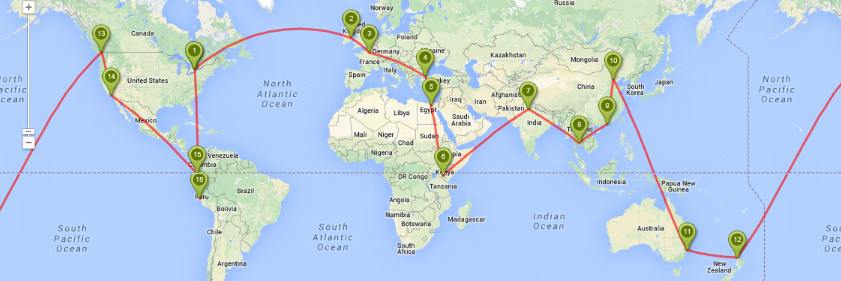Did you ever wonder how the universe was created?
I have, so it was amazing when we were invited to visit CERN by our new Genevan friends Amy and Joao.
CERN is a science organization that is based on the border of Switzerland and France. The name stands for “Conseil Europeen pour la Recherche Nucleaire” in French, or in English, “The European Organization for Nuclear Research”. This compound holds the largest and most powerful particle accelerator in the world called the LHC.
When we were there, we went on a private tour with Joao. He works at CERN on the LHCb experiment as an engineer. We were able to go to places that we wouldn’t have been able to see if we were on a public tour. We got a great inside scoop on the function of the room and hardware used because he was responsible for designing many of the key components of the LHCb machinery.

Since the experiments are so powerful and expensive, the security was incredible. A retina scan was required to give employees access to the facility. There were two doors that were airlocked to make sure that only one person could pass through the doors at one time.
The LHC, or Large Hadron Collider, is a 27 kilometre ring of superconducting magnets and a number of accelerating structures used to increase the energy of the particles. Located 100 metres below ground, the magnets in the accelerator can conduct electricity without losing or wasting energy, so they must be kept cold at -271.3 degrees C, colder than outer space. Inside the accelerator, two beams of particles are fired in opposite directions at close to the speed of light. They are guided around the tubes they travel in by the superconducting electromagnets until they are forced to collide with one another at any one of the four points in the accelerator known as ATLAS, ALICE, CMS, and LHCb. Despite the size of the machinery, all of the equipment must line up to within one millimetre in order for the experiments to record the data during the collision. The whole process is described as being similar to firing two needles 10 kilometres apart and making them hit head on. This is an amazing piece of technology and I am curious to see what will replace it in the future.


Another piece of science that has increased knowledge is the discovery of the Higgs boson particle at CERN in 2012. This particle is important because it is thought to be the “God particle”, the one that made the universe as part of the “Big Bang” theory. It was discovered by François Englert and Peter Higgs, who received the joint Nobel prize in physics in 2013.
The tour with Joao was excellent and taught us a lot of new information about physics, engineering and the science and technology needed to create and maintain these experiments. We’d like to thank him for enhancing our experience and answering all of our questions.

Visiting CERN was an amazing experience and I learned so much while we were there. Maybe one day I’ll work there too….





Comments
11 responses to “It’s CERN-tastic!”
Mikhaila – what an opportunity of a lifetime – you described everything in so much detail and was great to see pictures of your visit. I’m so jealous.
Harriet
Harriett,
You’ve said everything I was going to say! What a fantastic thing to do, and I, too, am seriously jealous 🙂
Chris
Hello Harriet and Chris,
It truly was an experience of a lifetime, and I’m so glad I am able to share my knowledge of it with others. Don’t be jealous, you can take a tour of CERN any time.
Mikaila, thanks for sharing your experience at CERN. I have always been fascinated by the concepts of physics and especially particle theory. You got to experience something special. Our grade 7’s are learning about the particle theory in science this term. Before we started, most only knew about the Big Bang Theory by the popular TV show. Now they can explain, using the particle theory, why objects expand when heated. I will share your post with them in science class, if that is alright by you.
Hi Mr. Janssen,
It would be great if you shared the post with your students! This blog is about sharing our learning with other people to teach them something new. If you would like more pictures or if anyone has any questions, please feel free to send us a message.
Now I have to go and do some more research myself on the purpose of all of this. You have “involved” me!
What a most interesting and different day that must have been.
Herta
Hello Herta,
This was our science lesson for that day! It was a really neat experience and I’m glad we’ve made you interested in this topic.
Hey – TV characters Leonard and Sheldon from “The Big Bang Theory” are always talking about CERN and the Higgs Boson Particle so now I feel more connected to my form of “couch surfing”!
Hi Teta Colleen,
Knock knock knock Teta Colleen, knock knock knock Teta Colleen, knock knock knock Teta Colleen! 🙂
That was certainly a detailed physics, engineering, science, and technological lesson! Imagine using retina scans to secure the facility! You were very fortunate to have this wonderful opportunity!
Hello Baba,
I have a new idea for a security system for my room now…. It was really cool, like something out of Star Wars! 🙂